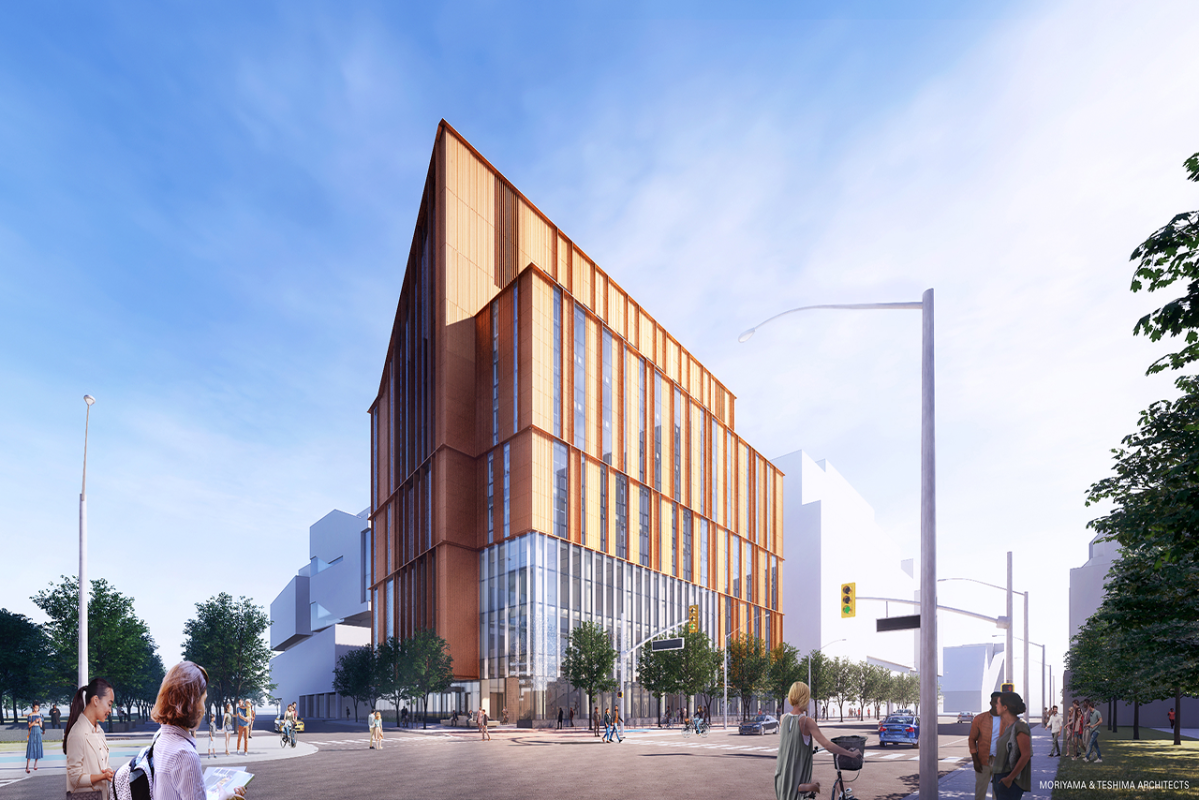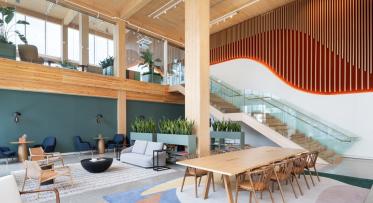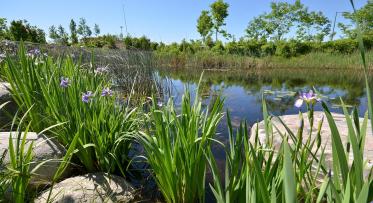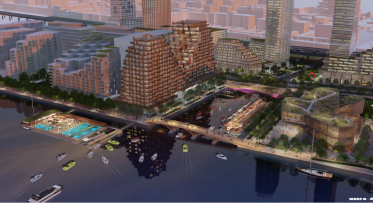A New, Resilient Vision for Sustainable Neighbourhoods on the Waterfront
The Arbour - George Brown College's new mass timber-facility on the waterfront - is a prime example of raising the bar on innovative low-carbon design, a key component of our newly updated Green Building Requirements. Photo Credit: Moriyama & Teshima Architects and Acton Ostry Architects
POSTED: FEBRUARY 8, 2021 I DESIGN, INNOVATION, SUSTAINABILITY
By Aaron Barter
Last year was our planet’s hottest year on record. The Earth’s average temperature has risen by more than two degrees since 1950, and cities like Toronto will continue to experience more extreme weather and deadly heat events. By 2040, we can expect approximately 66 days with temperatures above 30°C.
With buildings currently contributing 55 per cent of carbon emissions in Toronto, we know that developing greener buildings can have a real impact on the health and resilience of our city. On Toronto’s waterfront, we have a responsibility to address climate change while also demonstrating that sustainability doesn’t have to come at the expense of beautiful design and that world-class city-building is within reach.
To do this, Waterfront Toronto applies mandatory performance standards to its neighbourhood development projects – our Green Building Requirements (“GBRs”). These requirements are embedded in our proposal calls and enforced by contract with development partners. To date, these requirements have led to 30 new LEED Gold or Platinum buildings on the waterfront (15 certified and 15 in-progress). Looking ahead, these updated requirements will apply to all our new development projects, including our upcoming Quayside project.
With evolution in Toronto’s real estate industry and advancement of green building specifications, Waterfront Toronto has accordingly updated these requirements to deliver zero-carbon-ready buildings.
These new requirements can now be found on our website here.
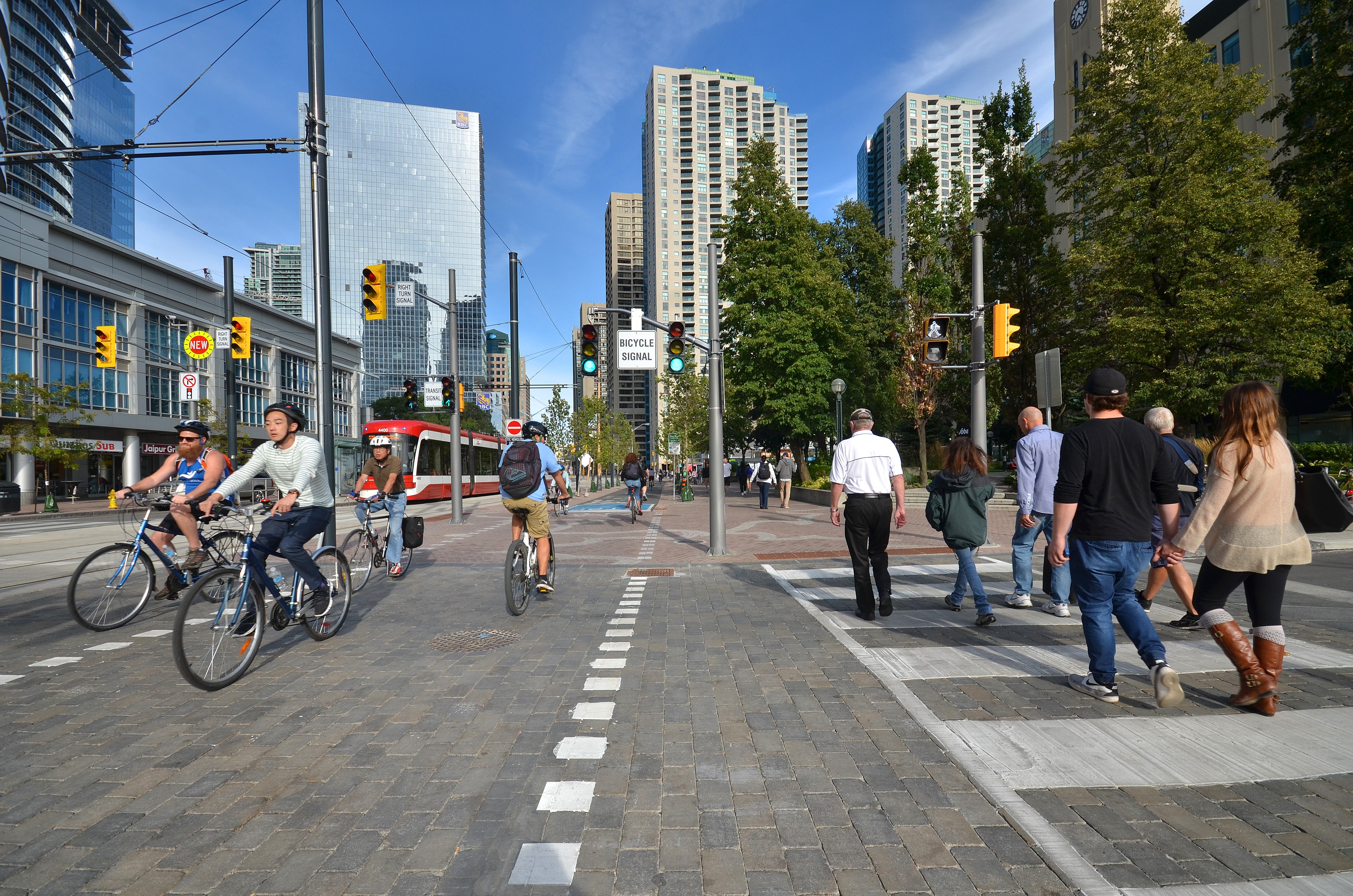 The Green Building Requirements encourage people to get around in a greener way by requiring buildings to include bike parking and e-bike charging stations.
The Green Building Requirements encourage people to get around in a greener way by requiring buildings to include bike parking and e-bike charging stations.
After benchmarking global best-practices in sustainable development and low-carbon resilience, we updated our requirements to focus on outcomes and sync with Tier 3 of the City of Toronto’s Toronto Green Standard, while enabling creativity and innovation in design by developers. Other notable updates include:
-
New buildings will be required to use more sustainable building materials, including 50% recycled metal in steel and rebar, low-carbon concrete (with 25% Supplementary Cementing Materials), or timber products certified by the Forest Stewardship Council.
-
Developers will need to disclose the embodied carbon content of their buildings throughout the design phase, reflecting the emissions associated with the extraction, manufacturing and transportation of materials, and the construction of the building itself, using the Canada Green Building Council’s lifecycle analysis process.
-
The landscape around new buildings will feature green spaces with biodiverse plantings, native species and generous tree canopies, as well as rooftop garden plots for community urban agriculture.
-
New buildings will also be designed for zero-carbon operations, when using clean electricity. These measures will limit operational greenhouse gas emissions to 5 kg CO2/m2/year, based on Tier 4 of the Toronto Green Standard.
In addition to lowering energy bills and improving home comfort with fewer drafts, these energy efficient buildings will also provide constantly filtered air to improve indoor air quality and health for occupants – a need that has become acutely apparent during the COVID-19 pandemic.
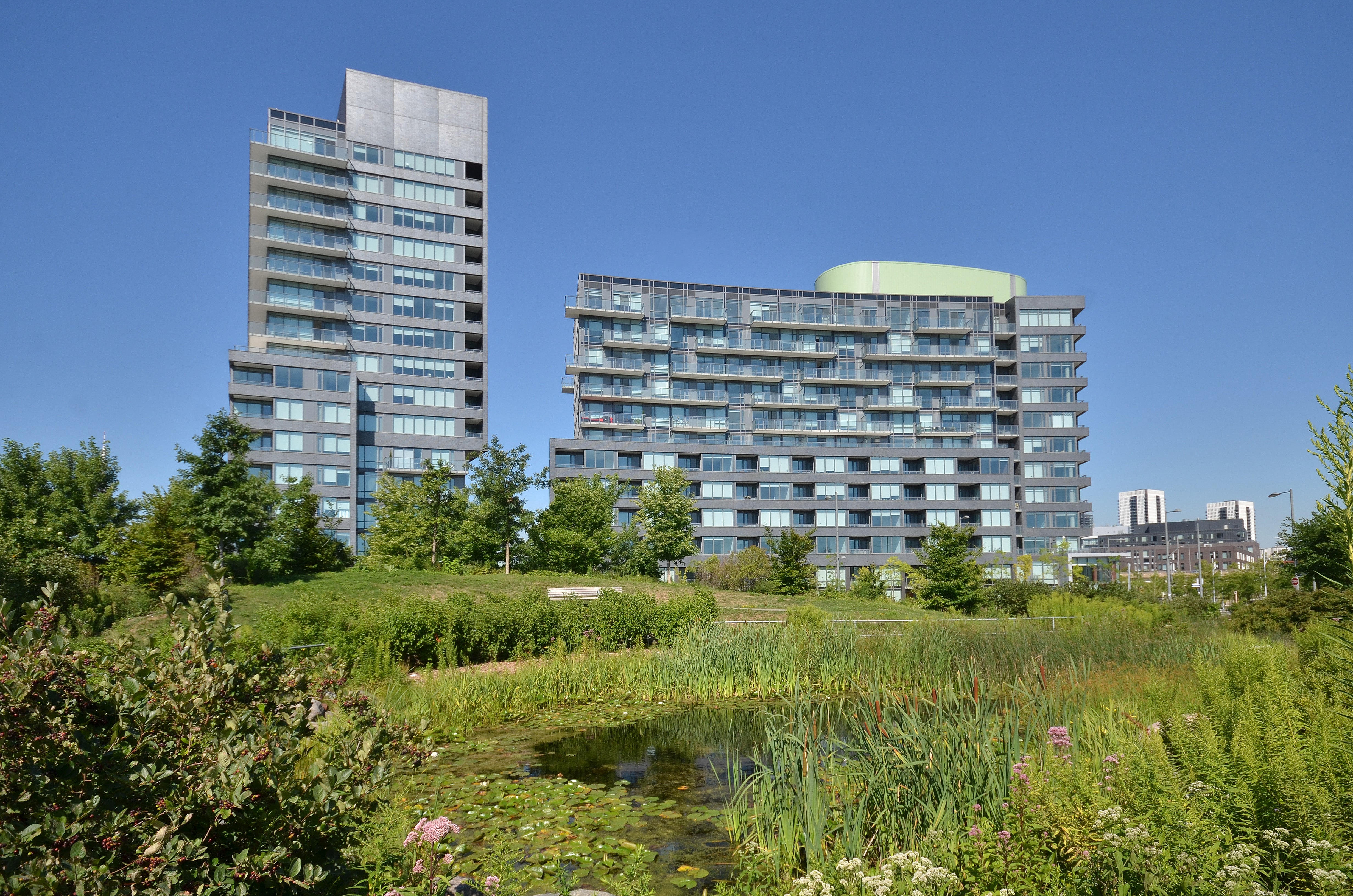 The Green Building Requirements support green infrastructure by requiring native and salt tolerant plantings around buildings as well as the re-use of stormwater for landscape irrigation.
The Green Building Requirements support green infrastructure by requiring native and salt tolerant plantings around buildings as well as the re-use of stormwater for landscape irrigation.
These new Green Building Requirements will serve to create more livable and resilient waterfront neighbourhoods with green outdoor spaces that bring people together, while also lowering both the embodied and operational greenhouse gas emissions to help in Canada’s fight against climate change, reaffirming Toronto’s waterfront as a global model for sustainable and resilient development.
Please reach out to info@waterfrontoronto.ca with any questions you may have about the new standard.

